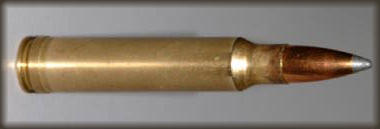

 The Accurate Reloading Forums
The Accurate Reloading Forums  THE ACCURATE RELOADING.COM FORUMS
THE ACCURATE RELOADING.COM FORUMS  Rifles
Rifles  Medium Bore Rifles
Medium Bore Rifles  400 yd trajectory 160 vs 175 7mm bullets
400 yd trajectory 160 vs 175 7mm bulletsGo  | New  | Find  | Notify  | Tools  | Reply  |  |
| One of Us |
Assuming same accuracy, what is the trajectory difference between 160 and 175 gr bullets of same design? Is it a significant difference in the field for shots up to 400 yds.? I'm planning on setting up a 7mm mag for Mule deer and backup to my Whelen on Elk. | ||
|
| one of us |
Charts, somebody's thoughts, and my guess will never equal, you going out and shooting the gun to find out. To many variables involved at that range, so you just have to shoot both bullets and find out for yourself. When you get the data, write it down and take it hunting with you, if you believe you will really be shooting at that range. 400 yards, thats a long ways. But, with practice can be done fairly easily. | |||
|
| One of Us |
According to the Sierra Infinity Program, assuming a velocity of 3000 for the 160 and 2900 for the 175 and a 200 yd. zero, there is only one inch difference at 400. Not enough over the entire range to make a significant difference. They are both right at 20 in fo drop. Jeff. | |||
|
| one of us |
Heres a website I stumbled onto one day. It has generic coefficients but most manufacturers have them slightly inflated anyhow..this website is pretty easy to use. http://www.handloads.com/calc/ | |||
|
| one of us |
What Jeff said is true. I settled on 160gr bullets in my 7mag for distance work. If I were hunting in close I might switch to the 175grfor the added penetration & to slow impact vel. down just a bit, but if I know I'm hunting in close, I use my .338-06. LIFE IS NOT A SPECTATOR'S SPORT! | |||
|
| One of Us |
Bugger all difference until you get out past the 500-600 yard mark I would think then the heavy bullet would start to overtake the lighter one. | |||
|
| Powered by Social Strata |
| Please Wait. Your request is being processed... |
|
 The Accurate Reloading Forums
The Accurate Reloading Forums  THE ACCURATE RELOADING.COM FORUMS
THE ACCURATE RELOADING.COM FORUMS  Rifles
Rifles  Medium Bore Rifles
Medium Bore Rifles  400 yd trajectory 160 vs 175 7mm bullets
400 yd trajectory 160 vs 175 7mm bullets

Visit our on-line store for AR Memorabilia

